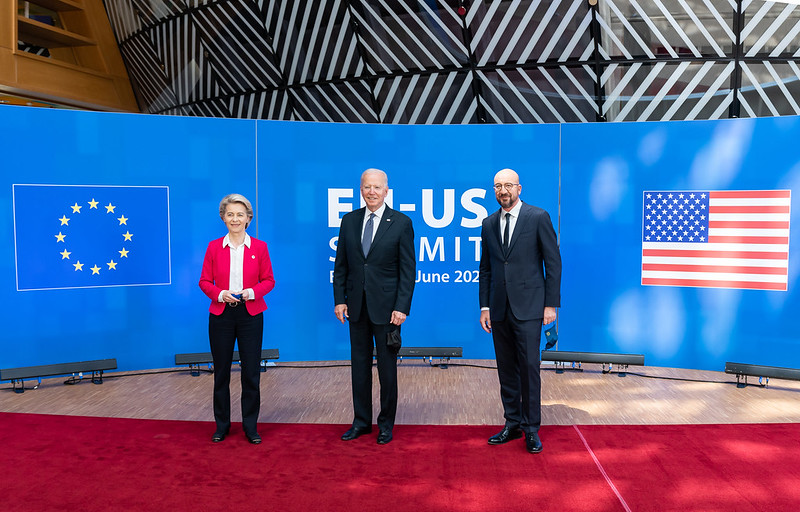
The inaugural gathering of the new council will be held in Pittsburgh at the end of September. There’s a lot for the two sides to discuss.
This past July, President Biden and European Commission President Ursula von der Leyen announced the inaugural Trade and Technology Council between the United States and the European Union. The goal of the new council is to serve as a forum for the two allies to coordinate on issues of trade, economic issues and technology policy, as well as to mutually strengthen global democracy and stand up to autocracy.
The first meeting is scheduled to happen on Wednesday, Sept. 29 in Pittsburgh – and there is certainly a lot to discuss.
When it comes to trade, U.S.-E.U. ties have recently been strained, as ongoing issues such as Section 232 tariffs have caused political fallout. The U.S. and E.U. are working to negotiate a deal on the tariffs, which the E.U. wants to see removed. But both the United Steelworkers union and American steel companies – along with experts at organizations like the Economic Policy Institute — have warned that removing the tariffs without first resolving the ongoing problem of steel overcapacity could put the U.S. steel industry at risk.
Another major flashpoint is the E.U.’s recent proposal for border-carbon tariffs on foreign imports from countries that lack sufficient environmental protections, which stands to harm U.S. producers seeking access to the EU market. Plus, there have been ongoing disagreements between the U.S. and E.U. over how to address China, whose mercantilist, anti-democratic actions threaten the global free market system.
Ahead of this momentous first meeting, we’ve been reading up and preparing for what may very well amount to a critical juncture in cross-Atlantic policy. And our friends at the Information Technology and Innovation Foundation put together a brief with some key issues to consider in the run-up to the conference.
In regards to the conference itself, author Robert D. Atkinson argues that there are two major risks faced by the United States.
One is that too little will come from the conference, as the E.U. will continue to want to “have its cake and eat it too” by refusing to make major concessions — especially when it comes to addressing trade issues caused by China. Alternatively, there is also the risk that too much will come from the summit, especially if the United States concedes policies that make us innovative in order to appease European interests.
“The risk is that the United States will give up too much in order to achieve harmony, as it did this summer in abandoning $7.5 billion in tariffs it had levied on European products in response to unfair subsidies the EU has been giving the aircraft manufacturer Airbus,” Atkinson writes.
Key to the success of U.S. negotiators will be to recognize that the US benefits from a superior system of innovation — largely driven by our legislators’ reluctance to engage in overregulation as many on the European side so often do, Atkinson argues. The U.S. must recognize that the Europeans do not sit on any sort of moral high ground as they often try to claim in regard to their digital privacy rules and views on the role of government and corporations.
American values are in no way inferior to European ones, and especially when it comes to the issues that matter such as defending global democracy and leading the global economy, the U.S. often has better policy.
Nowhere is this more true than in U.S.-E.U. trade, Atkinson argues. There is no reason for the U.S. to import Europe’s rules, or even do more to harmonize them. Instead, the two countries need to make sure that their policies are interoperable.
But what will be key is that the United States gets more European support for standing up to China’s government economically, which the E.U. has thus far been reluctant to do. Both the United States and the European Union recognize the threat posed by China on many fronts.
The U.S. cannot continue to bear the brunt of economic retaliation while the E.U. continues to increase their market share with China’s regime, which is causing so many of the problems endemic in today’s global trade landscape.
“It would be ideal if the E.U. were to unequivocally join the U.S. to limit Chinese innovation, mercantilism, and digital authoritarianism,” Atkinson writes, “but if the EU takes even limited measures toward that goal, it would be a success.”
Read the full brief, Advancing US Goals in the US-EU Trade and Technology Council.
